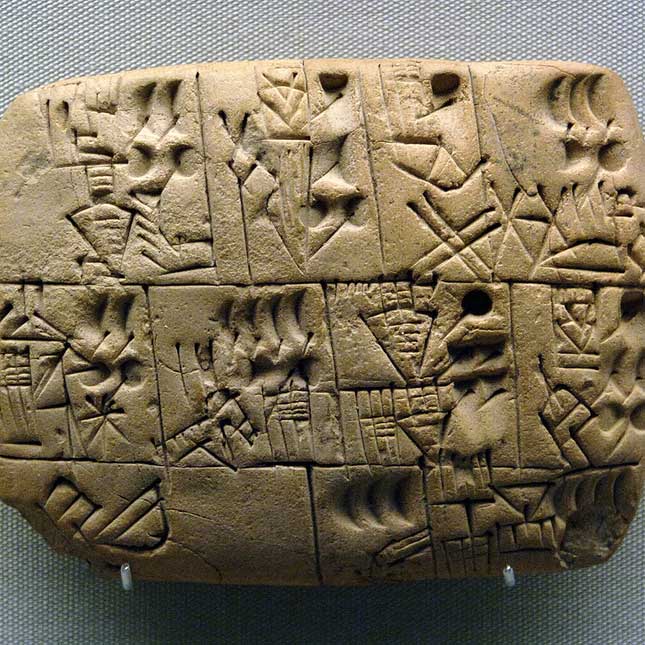By utilizing ancient methods and ingredients, archaeologists are uncovering millennia of history to recreate beers from ancient Egypt, Greece, and Rome.
Some of the most fascinating beers produced in recent years provide a glimpse into human history. These “ancient brews” were once enjoyed in various locations, from ancient Egypt and Greece to Europe, among the Celtic and Viking peoples. They also appreciated having a variety of options, with 5,000-year-old tablets documenting recipes for nearly 20 different beers made from barley.

Mr. Travis Rupp has created an ancient beer line and is honored as the Beer Archaeologist.
Mr. Travis Rupp, who teaches Classics and Anthropology at the University of Colorado (USA) and has professional brewing experience, states, “Recreating ancient beers allows us to touch and taste history. It humanizes our ancestors and helps us realize that they are not so different from us.” This combination of skills has helped Mr. Rupp create an ancient brew product line, earning him the title of Beer Archaeologist, which is also the name of his business.

The revival of ancient beers is an opportunity to look back at history.
In addition to impressing modern consumers, these ancient brewing methods have revealed the simple secrets of beer production millennia ago: starting with sprouting grains, then drying and heating them in water to produce sugars. Yeast is then added to initiate fermentation and create beer.
A key difference between ancient and modern brewing methods is the use of hops. Although hop plants have grown wild in various forms across Europe for at least 10,000 years, their first recorded use in beer was by French monks in the 9th century. Hops are quite versatile, providing different effects when added at various stages of the heating process: adding them early highlights bitterness; in the middle for optimal flavor; and at the end to enhance aroma.

A clay tablet from Mesopotamia recording the distribution of beer in ancient times.
While the fundamental knowledge of beer production has remained consistent throughout history, recreating ancient brews highlights the bold flavors of beers long before hops were used, imparting valuable lessons for modern brewers today.
Since 2016, Mr. Rupp has overseen the Ales of Antiquity line at Avery Brewing, encompassing both timeline and geography. One of the ancient brewing recipes, known as Nestor’s Cup, is based on a formula from around 1600-1100 BC and includes barley, Einkorn wheat, fish roe, figs, and spelt. He has also recreated a 900-year-old South American corn beer called “chicha,” which nearly got him fired due to the unique fermentation process involving using saliva produced by chewing corn.
While modern beer production relies almost exclusively on sealed steel fermentation vessels, ancient brewers used open containers—typically large ceramic vessels with open tops that allowed wild yeast in the air to enter.
Another key pioneer is Mr. Patrick McGovern, a professor at the Penn Museum of the University of Pennsylvania (USA), often referred to by brewers as the “Indiana Jones of ancient beer.” In the early 1990s, Mr. McGovern analyzed yellow residue found in bronze drinking vessels at an ancient tomb in Turkey dating back 2,700 years, believing it might belong to the legendary King Midas.
The drink used in this person’s funeral turned out to be barley beer mixed with honey and grape wine, along with spices like saffron. Inspired, Mr. McGovern collaborated with the American brewery Dogfish Head in 1999 to create a popular beer called Midas Touch. He then continued to work with Dogfish to create a diverse line of ancient beers, the most recent being Tree Thieves in 2022. This is an ancient Celtic-style beer known as “gruit,” using plants for flavoring to reflect the brewing process before hops were used. “It has the bitterness of wormwood and carrot,” Mr. McGovern explained.
Ms. Charles believes that early pioneers in beer production left behind valuable lessons. “I think working with clay vessels and ancient grains will be the processes used in the future,” she said. Meanwhile, Mr. Rupp is planning his next discoveries. “I am researching how to brew beer using brackish water, which may have been used to produce beer in Roman-occupied England.”
Humanity’s love for beer may date back further than we think: in 2018, fermented grains were found on a 13,000-year-old stone mortar in a cave in northern Israel—the oldest evidence of brewing beer to date.



















































